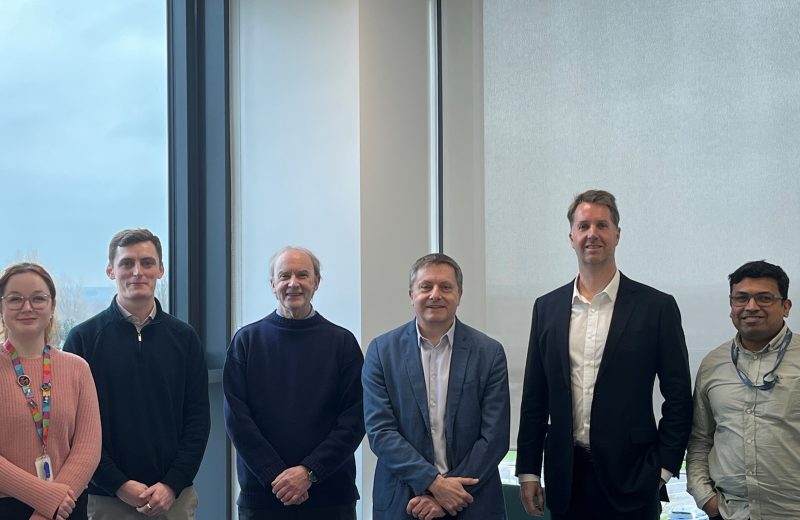The Rosalind Franklin Institute is a partner in two successful Science and Technology Facilities Council (STFC) Cross Cluster Proof of Concept Grants. Both grants will see the Franklin work with UK SMEs to tackle important scientific challenges.
In one project, the Franklin’s Structural Biology team partner with Azadyne, who are focused on developing new treatments for autoimmune diseases using their own novel approach.
Professor Ray Owens, Head of Protein Production UK at the Rosalind Franklin Institute, said, “The partnership with Azadyne is an exciting one for the Franklin as it could provide a novel way of increasing the yield of proteins that are difficult to express, so we were delighted to have been successful in this grant and look forward to starting the work with Azadyne.”
Together, the project team will explore a new pathway to enhance protein expression applicable to the production of therapeutic proteins. The manufacturer of high-quality proteins at large scales is becoming increasingly important for the manufacture of therapeutics, such as therapeutic antibodies and vaccines.
However, for some of the complex engineered therapeutic proteins it has been difficult to scale up the production of these proteins using standard methods to the levels which would be required while maintaining the quality of the protein. This project hopes to explore the feasibility of a new method to allow large scale production of these complex therapeutic proteins.
Dr Jason Rutt, CEO of Azadyne, said, “We are thrilled to embark on this collaboration with the prestigious Rosalind Franklin Institute, tapping into their world-renowned expertise. This exciting partnership has immense potential to revolutionise the manufacture of biologics, with huge benefits for the treatment of patients world-wide. We are very grateful to the STFC for the award of this grant.”

The second project will involve developing a new event driven time resolved detector for ultra high electron imaging and diffraction with Quantum Detectors. Quantum Detectors is a spin-out from STFC and Diamond Light Source, who develop state of the art detectors for TEM and synchrotron facilities.
Professor Angus Kirkland, Science Director at the Rosalind Franklin Institute, said, “This new detector has the potential to revolutionise how we image a range of samples, removing noise from our data, and increasing the acquisition speed. This will allow imaging at unprecedented speed before radiation damage of the sample occurs.
“We are also delighted to be continuing to work with Quantum Detectors, who have been longstanding partners in several projects.”
Dr Liam O’Ryan, Chief Technology Officer at Quantum Detectors, said, “We are excited to be introducing a game-changing time-resolved detector that will enable researchers to delve deeper into the dynamic world of nanoscale processes and collect data with unprecedented speed and precision. Quantum Detectors is proud to be working with the world-leading scientists at the Rosalind Franklin Institute, allowing us to leverage their deep knowledge and understanding to push the boundaries of what is achievable in electron microscopy.”
We are proud partners in these two projects which deepen our knowledge of biological systems and provide state of the art technologies. We look forward to sharing more about these projects as they develop.